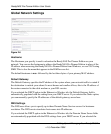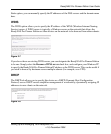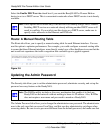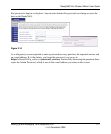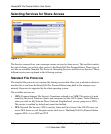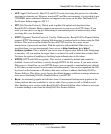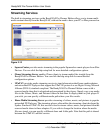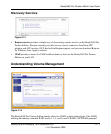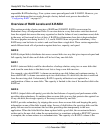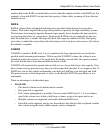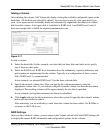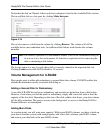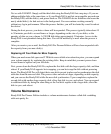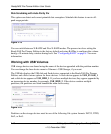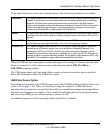
ReadyNAS Pro Pioneer Edition User Guide
2-12 Setting Up and Managing Your ReadyNAS Pro
v1.0, December 2008
expandable RAID technology. Your system comes preconfigured with X-RAID2. However, you
can switch between the two modes through a factory default reset process described in
“Configuring RAID” on page 6-7.”
Overview of RAID Levels and X-RAID2
This section provides a basic overview of RAID and X-RAID2. RAID is an acronym for
Redundant Array of Independent Disks. It can store data in a way that writes extra data derived
from the original data across the array organized so that the failure of one (sometimes more) disks
in the array will not result in loss of data. A RAID level determines how data is kept redundant.
The most popular ones being levels 0, 1, 5, and 6. RAID 0 does not provide redundancy. Also,
RAID arrays can be faster to write to and read from than a single disk. These various approaches
entail different trade offs of protection against data loss, capacity, and speed.
RAID 0
RAID 0 (striped disks) distributes data across several disks in a way that gives improved speed and
full capacity, but all data on all disks will be lost if any one disk fails
RAID 1
RAID 1 (mirrored disks) could be described as a backup solution, using two or more disks that
each store the same data so that data is not lost as long as one disk survives.
For example, a two-disk RAID 1 volume can sustain a one-disk failure and continue running. A
three-disk RAID 1 volume can sustain up to two disk failures. If a disk fails, the data is retrieved
from the surviving disk. Unfortunately, RAID 1 capacity utilization is not optimal in a
configuration of three or more disks. The capacity is limited to the size of the smallest disk in the
RAID set.
RAID 5
RAID 5 (striped disks with parity) provides the best balance of capacity and performance while
providing data redundancy. It combines three or more disks in a way that protects data against loss
of any one disk; the storage capacity of the array is reduced by one disk.
RAID 5 provides redundancy by striping data across three or more disks and keeping the parity
information on one of the disks in each stripe. In case of disk failure, the surviving disks and the
parity disk are used to reconstruct the lost data, providing data transparently to the user
application. When the failed disk has been replaced with a good disk, the reconstructed data is
written out to the new disk; when the reconstruction (or sometimes referred as RESYNC) process
is complete, the volume returns to a redundant state. The capacity of a RAID 5 volume is the



